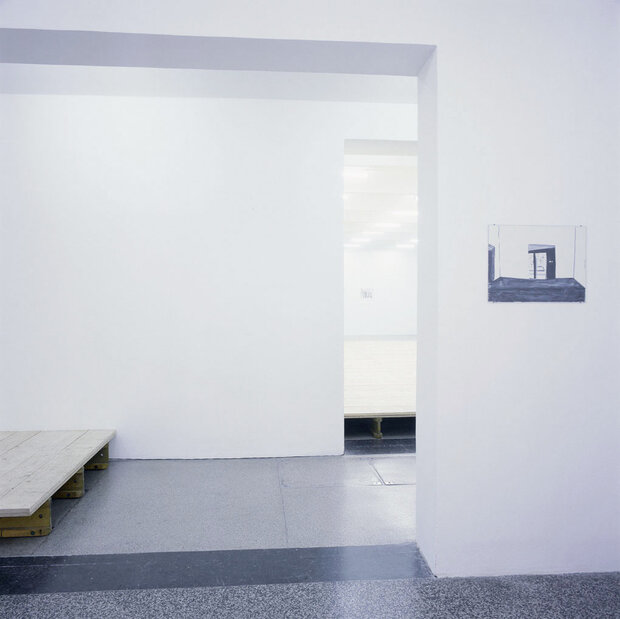Secession
2004

Carola Dertnig's drawings, video works and installations are concerned with the performative content of language - text, images, gestures - and document these as a process within which roles arise and are articulated. Ways of seeing shaped by feminism as well as the explicit interest in politicising gender are among the central aspects of her work. Parallel to her artistic activity, Carola Dertnig has curated numerous exhibitions on performance art and initiated the feminist network a room of one's own.
At the Secession Carola Dertnig is showing a new work that brings together her various fields of interest over the last few years. The exhibition consists of a sound installation, drawings, and an architectonic intervention.
The sound installation, a soundtrack in the space, is the monologue of a single person. Based on interviews with eye-witnesses of the so-called "Uni Scandal", the Art and Revolution action organised in 1968 in Lecture Theatre No. 1 at Vienna University, the text illustrates the invention of a new constellation of events. Dertnig has partly left the interviews unchanged, partly paraphrased them and partly supplemented them by new text passages. There thus emerges a narrative that is only modelled on the documentary to the extent that it is part of a fictional configuration. The determinant factor is more who didn't have their say and who was forgotten in the historiography. Who was in the audience, what role did women play, whereabouts were they, how did they feel; what was the affirmation/rejection ratio with regard to the action, how was the action evaluated and classified by the local historiographers in Austria? Neither the words "woman and "man , nor the pronouns "she and "he have found entrance into the text. Carola Dertnig thus refers on the one hand to the ideas of Beatriz Preciado and on the other hand to the fact that Viennese Actionism was a macho-heterosexual concept. In her Contrasexual Manifesto, Preciado argues that the body is a socially constructed text in which codes are either naturalised, omitted or deleted with the final aim of ensuring the material exploitation of one sex by the other. Preciado advocates shaking the foundations of the writing technologies of sex and gender as well as their institutionalisations (contrasexuel = all practices deviating from heterocentrism).
In a playful way (like in a children's game in which one is not allowed to say a specified word, in order to develop completely undreamt - of new combinations by means of this reduction), Dertnig retroactively tests the possibilities of a non-fixed approach. The process pursues a utopian idea and/or a longing for the writing of a history in which one sees oneself as having been adequately taken into account. What would happen if a different social and/or sexual concept had been formulated and one put it back in time?
In the cycle of drawings Dertnig uses similar tactics to those she employs in her hypothetical narrative in the sound installation. Here too she mixes the levels of art historical material and quotes, e.g. Viennese Actionism, Friedrich Kiesler's stage set designs, with feminist/utopian contents. The drawings show scenarios redolent of utopian film architectures containing subjects that cannot be categorised in normative terms. Here Dertnig is again referring to Preciado, who designates architectures and body architectures not only as political, but as contrasexual too.